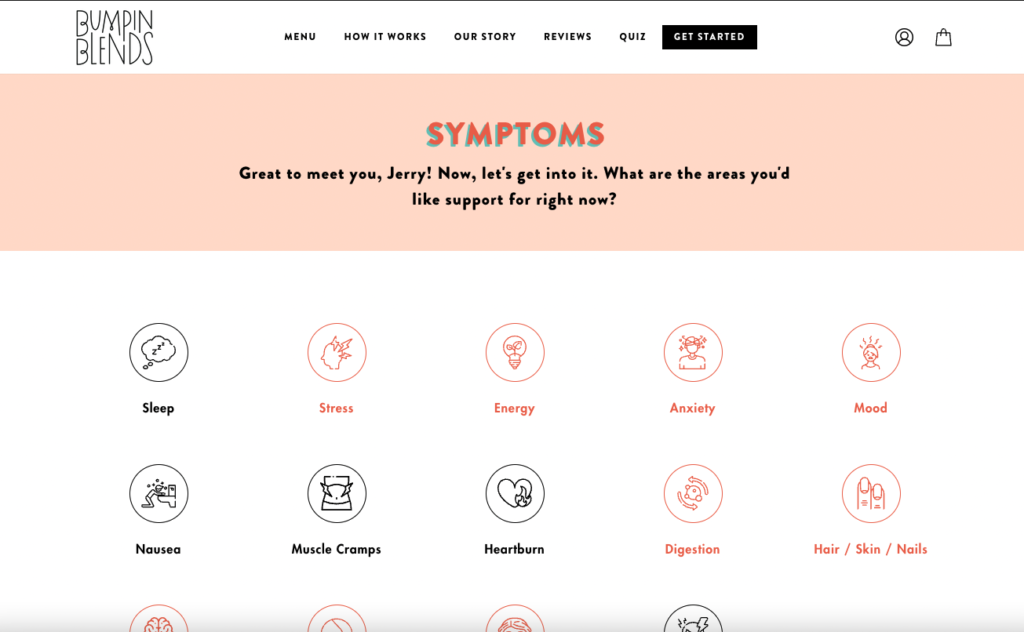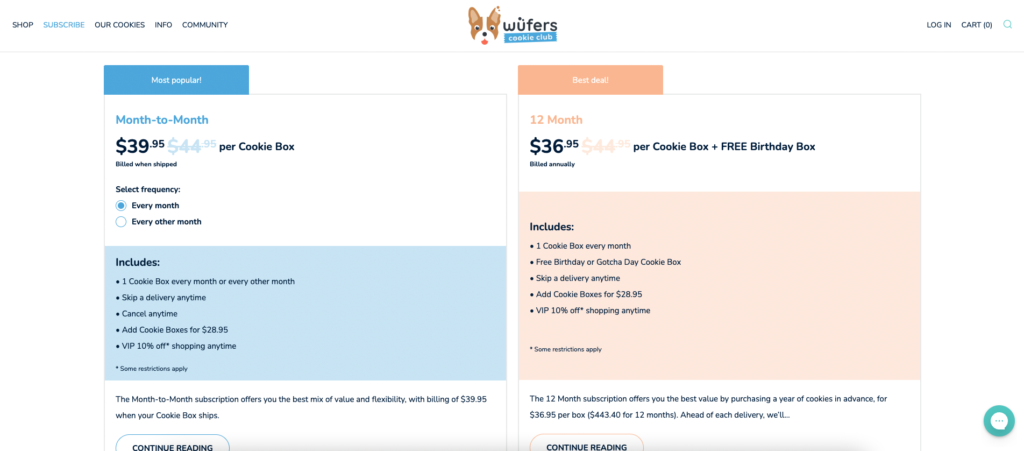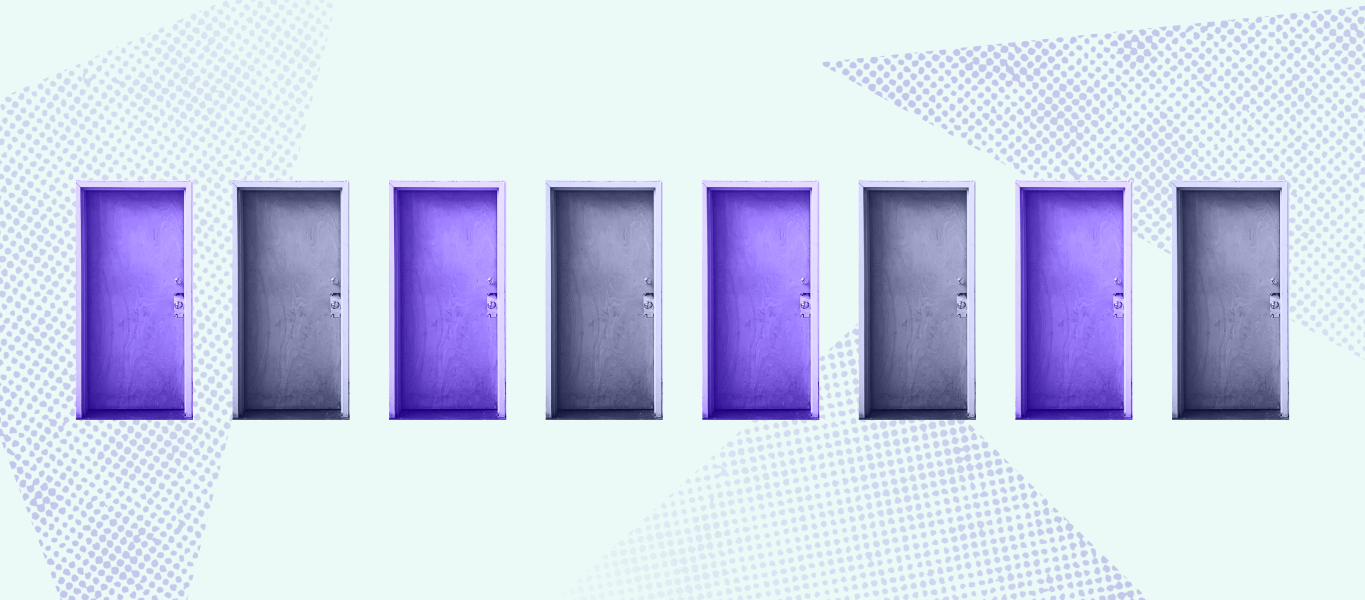Decision-making is a freedom that we, as consumers, are privileged to have. We utilize our conscious thought to make decisions for ourselves that tend to result in the purchase of a product or service that meets a current need we have.
However, when presented with too much choice, we face a dilemma. What if we make the wrong decision? What if we spend time overanalyzing our choices, only to become overwhelmed by the entire process?
Choice paralysis is a common problem that ecommerce business owners need to be aware of and work to mitigate. Left unchecked, you could be creating undue decision fatigue for your customers, and in the long run, leaving them to the point of no purchase or even cancellations.
Key takeaways
- Choice paralysis affects all consumers in some way.
- Giving customers fewer, more customized choices, can help them decide on the right products and services.
- Lead customers to the best decisions by utilizing data and experimenting with your offerings.
What is choice paralysis?
Choice paralysis, sometimes referred to as analysis paralysis, is the detrimental pause customers face when presented with too many options for fear of making the wrong choice.
Most people may think that customers want as many choices and options as possible. But the correlation between choice and satisfaction is not one-to-one. In fact, studies show that too many choices reduces future satisfaction because the decision-making process becomes too overwhelming. This results in decision paralysis which ultimately leads to the reverse outcome…they’re unable to make a decision at all.
The risks of choice paralysis
At the end of the day, the decision-maker, aka your customer, is the person who will need to overcome their analysis paralysis. But without intervention from you to help point them in the right direction, you run the risk of losing them altogether.
Choice paralysis can ebb and flow in intensity for your customers. Perhaps you are selling to a parent of young kids who is the default decision-maker in their home. Pairing the constant loop of decisions they have to make on a daily basis surrounding their kids and family with too many choices from your product offering can result in overthinking and overwhelm. It’s not that your products are even too complex or have too many choices. But when combined with their life of decision-making, it can stop them in their tracks.
Who faces choice paralysis?
Research shows that all consumers face analysis paralysis. Important decisions, such as medical decisions or job choices, can fatigue a customer before they even get to you. Life is full of complex decisions, so with you providing them advice on making the right choices for themselves, you can help improve the quality of their experience with you.
4 proven methods for overcoming analysis paralysis in your business
- Present fewer choices: In 2000, Sheena Iyengar and Mark Lepper did a study around analysis paralysis with shoppers who were presented varying amounts of jam to sample and purchase. This study found that the customers who were presented with more choices (four times as many), were one-tenth as likely to make a purchase.
- Make customers aware that they can unsubscribe or cancel anytime: By giving your customers a very visible “out,” you are able to alleviate the fear and analysis paralysis that their decision may result in a long-term commitment they’re not ready for.
- Utilize personalization to create a tailored experience: When customers are deciding on what products to buy from you, they very rarely need to see your entire offering. Understanding who they are based on the data you’ve collected can help you present the best choice. By giving them a tailored experience on your website, you reduce the mental energy needed in their decision-making process, which in turn allows them to stop overthinking and make the right decision for themselves.
- Boil down complex options into tangible steps: If your offering includes multiple pieces to build as a whole—for example, a curated box of gift items—design a process for your customers to walk through to avoid analysis paralysis. One way to do this is by narrowing the focus to each step. First, perhaps they select a box design. Next, the card that will go inside. After that, food items. And finally, maybe more options to curate the box based on a color or theme. The basic idea here is to break down too many choices into manageable pieces.
Choice paralysis examples & their solutions
Many merchants have found ways to boil complex decision-making into manageable opportunities on their website to help customers make the best decision for themselves, which ultimately reduces customer churn.
Bumpin Blends
A great example of this is with Bumpin Blends. Bumpin Blends sells pre-packaged and portioned smoothie cubes to provide customers with easy nutrition based on their needs. They have over 20 flavors, which could easily result in analysis paralysis for customers. But Bumpin Blends developed a quiz for customers to select the things that are most important for them to manage by using these smoothie cubes.

The result? A curated set of options that gives the person the ability to choose from the flavors they may like, without an overwhelming list.
Wüfers
Another example is Wüfers, creators of gourmet dog cookies. Wüfers presents customers with only two options to select from when it’s time to make a decision on their subscription offering. In a matter of minutes, customers can see the differences in package options, and the overall value of each box, so they can decide for themselves what they’d like.

The second part of their strategy utilizes the tactic of putting their cancellation and skip policy right up front. Of course, this doesn’t guarantee a customer will make a decision to subscribe with them, but it helps them not feel overwhelmed at the fact that they may be “locked-in” to a long-term commitment.
Make decision-making easier for your customers
Overanalyzing and overthinking are two of the biggest side effects of having to make too many decisions. Ensure your customers can avoid feeling exhausted by making the decision-making easier for them. A customer’s inability to decide can lead to lost revenue—not to mention frustration. Thankfully, there is an easy solution to avoid choice paralysis: give fewer choices and a tailored customer experience.
Sources
[1] Avoiding analysis paralysis: options without overwhelm (Recharge)
[2] More Isn’t Always Better (Harvard Business Review)
[3] Customer retention (Recharge ecommerce glossary)



